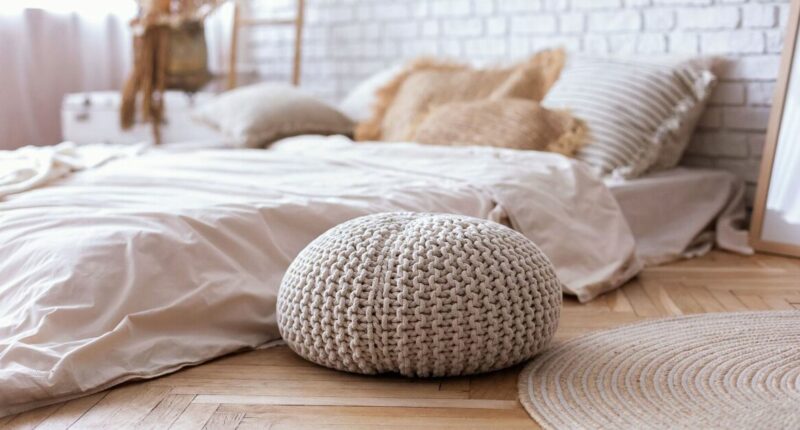Share this @internewscast.com

Research shows that in the days leading up to a full moon, people go to bed later and sleep less. (Image: Getty)
When it comes to interior design, few decisions affect your sleep and wellbeing more than where you place your bed.
Interior design specialist Zoe Warren from PriceYourJob.co.uk suggests that the way you position your bed plays a crucial role in building a peaceful atmosphere conducive to relaxation – an aspect often ignored by many.
Here are some of her top tips you can adpot in the bedroom :
Read more: ‘I’m a paint expert—these are the best colours to paint your kitchen walls’
Read more: Urgent alert to those opening car doors this summer – expert
The comman position: Take control of your space
A key principle of Feng Shui for arranging bedroom furniture is the ‘command position’. This involves arranging your bed so that you have a clear view of the door from where you sleep, without it being directly aligned with the bed.
Why? Because being able to observe the entrance helps your brain relax – no surprises, no threats, just peace of mind.
Zoe highlights, “Positioning your bed to see the door provides an innate sense of control. However, if it aligns directly with the door, the energy or Qi might flow too strongly, potentially disturbing your rest.”
Keep the headboard against a solid wall
For a sense of grounding and support, it’s best to place your bed with the headboard against a solid wall.
This concept transcends visual appeal – it contributes to psychological well-being and a heightened sense of security. It’s equally important to ensure that the bed is not nestled against multiple walls, allowing for an unobstructed flow of energy and easy access.
Steer clear of placing the headboard against walls with plumbing or gas pipes behind them, as the noise or vibrations can impact the quality of your sleep.

Humans are the only mammals that willingly delay sleep (Image: Getty)
Centre the bed for symmetry and style
Positioning the bed along a long wall (free from windows or doors) is a classic layout choice that introduces symmetry and tranquility to the space. Zoe advises placing nightstands on both sides for practicality and balance. This timeless design choice also creates room for art above the bed, enhancing its appeal as a focal point.
“Symmetry not only looks good but creates a rhythm in the room,” she says. “It helps promote a feeling of harmony, which is essential for a restful environment.
Let the room shape guide you
Room dimensions matter when deciding where to position your bed. In a square room, a centred bed layout works perfectly. In rectangular rooms, place the bed along the longest wall to avoid a narrow, cramped feeling. Just be sure not to block pathways or doors – this affects both energy flow and practical usability.
For smaller bedrooms, use the longest wall to free up floor space. In larger rooms, you have more flexibility – go for balance by placing the bed in the centre or against a feature wall.
Embrace off-centre layouts (when you have to)
If your room has structural limitations – such as awkward window placement or built-in wardrobes – don’t stress. According to Zoe, off-centre placement can still feel balanced if you arrange surrounding furniture cleverly. A large bedside table or a piece of artwork can help rebalance the room visually.

Regular exercise usually improves your sleep patterns. (Image: Getty)
Don’t forget the headboard
Headboards are more than decorative. Feng Shui considers them a symbol of stability and security. Plus, they help to frame the bed beautifully and anchor the space. Choose a style that matches the rest of your décor, whether soft and upholstered or striking and bold.
Mistakes to avoid
Zoe also highlights a few bed placement mistakes that could interfere with your sleep quality:
-
Under a window – Risk of draughts, light disruption, and a lack of privacy.
-
In line with the door – Makes you feel vulnerable; not ideal for deep rest.
- Blocking walkways – Restricts natural movement and flow in the room.














